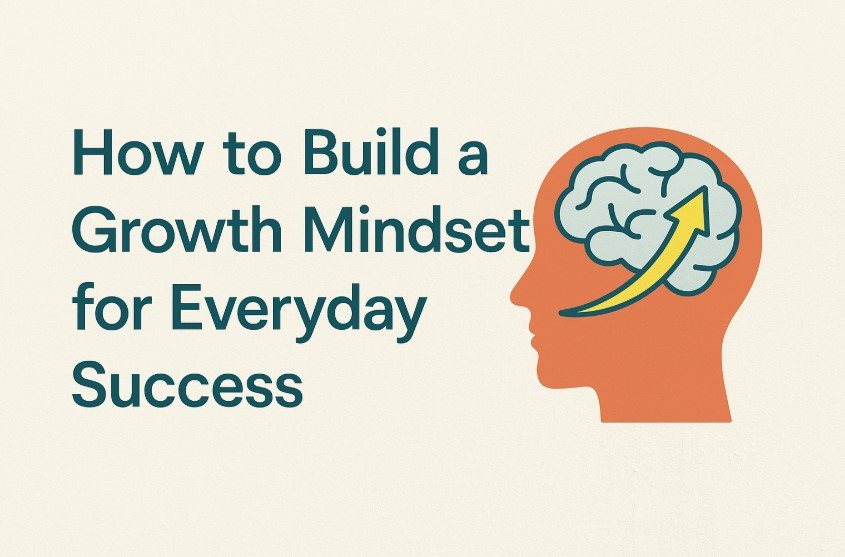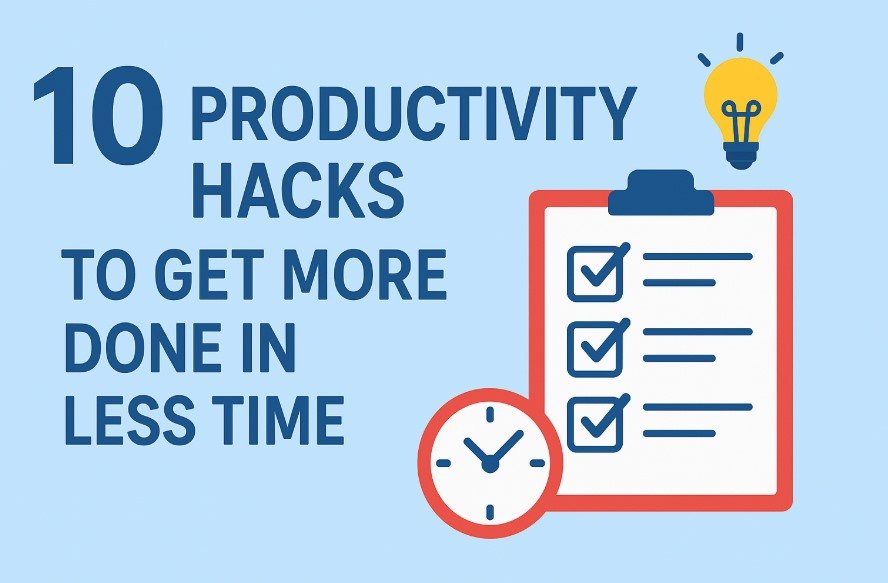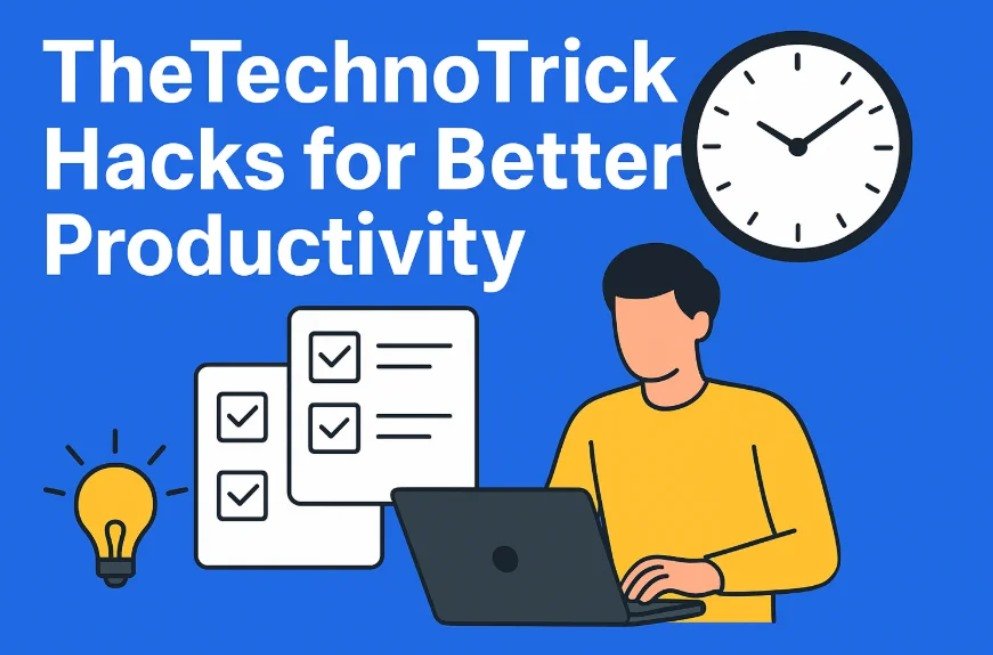
A growth mindset is the belief that abilities and intelligence can be developed with effort, practice, and learning. It is the opposite of a fixed mindset, where people think their talents are permanent and cannot improve. Having a growth mindset helps people become more open to challenges, more willing to learn from mistakes, and more confident about trying new things. Building this mindset is not only helpful for career or education but also for everyday life. It can improve how you handle daily tasks, relationships, and personal goals. This article explains how to build a growth mindset step by step and use it to create everyday success.
Understand the Basics of a Growth Mindset
The first step is understanding what a growth mindset means. It is about seeing skills as flexible. People with this mindset believe that they can get better through effort and feedback. They do not see failure as permanent. Instead, they see it as a chance to learn. This attitude helps them stay motivated even when they face difficulties.
Key characteristics of a growth mindset:
- Willingness to learn new skills
- Openness to feedback and criticism
- Belief that effort leads to improvement
- Ability to stay calm after making mistakes
- Curiosity about new challenges
Recognizing these traits can help you understand where you are now and what you need to improve.
Identify and Challenge Fixed Mindset Thoughts
Most people have a mix of growth and fixed mindset thoughts. Fixed mindset thoughts stop progress by making you think that you are not capable of improving. To build a growth mindset, you must first notice these negative thoughts and then replace them with positive ones.
For example, a fixed thought may be: “I am just not good at this.”
A growth thought would be: “I can get better if I practice more.”
Practical steps:
- Write down your common negative thoughts
- Question if they are completely true
- Replace them with learning-focused statements
- Remind yourself of skills you improved in the past
Doing this regularly can train your mind to look for ways to grow instead of giving up.
Focus on Effort and Process Instead of Results
A key part of a growth mindset is valuing the process, not only the outcome. People often feel pressure to win or be the best, which can cause fear of failure. Instead, pay attention to how much effort you are giving and what you are learning during the process. This helps reduce stress and builds confidence.
Ways to focus on effort:
- Set small daily goals that are realistic
- Track the time and energy you put into learning something
- Celebrate small improvements, even if the final result is not perfect
- Ask yourself what you learned after each attempt
This habit makes challenges feel less like a threat and more like a chance to get stronger.
Embrace Challenges as Opportunities
Challenges are a normal part of life, and people with a growth mindset use them to improve. Instead of avoiding hard tasks, try to approach them with curiosity. This builds resilience, which helps you handle stress and changes better. Difficult tasks can teach problem-solving, planning, and time management skills that are useful in daily life.
How to embrace challenges:
- Start with slightly difficult tasks to build confidence
- Break big problems into smaller steps
- Ask for help or feedback when needed
- Keep trying even if you fail at first
The more often you face challenges, the more confident and skilled you become.
Learn to Use Feedback Effectively
Feedback is an important tool for building a growth mindset. It gives you information about what you are doing well and what you need to improve. People with a fixed mindset often see feedback as criticism, but people with a growth mindset see it as guidance. Learning to accept and use feedback can speed up your growth.
Ways to use feedback effectively:
- Listen without interrupting or getting defensive
- Ask questions to understand the feedback better
- Write down the key points and plan what to improve
- Thank the person for their input, even if it is hard to hear
Treat feedback as useful data that can help you improve your performance. This approach reduces the fear of failure and builds a habit of learning from others.
Build Daily Habits That Support Learning
A growth mindset becomes stronger when it is part of your daily routine. Building habits that support learning will make improvement a normal part of your life. These habits do not need to be big or complicated. The key is to stay consistent and make learning a regular part of your day.
Useful daily habits:
- Spend 15–30 minutes a day learning something new
- Read books, articles, or watch videos on topics you want to improve
- Write a short journal entry about what you learned each day
- Practice skills even when you are not in a formal learning setting
Small actions done regularly have a bigger effect over time than large efforts done only once in a while. These habits build discipline and confidence, which are both important for everyday success.
Practice Self-Reflection
Self-reflection helps you understand your progress and where you can improve. It is a way to check your thoughts, feelings, and actions. People who reflect on their behavior can see patterns, understand their mistakes, and make better plans for the future. This is a key part of developing a growth mindset.
How to practice self-reflection:
- Set aside a few minutes daily or weekly to think about your actions
- Ask yourself what worked well and what did not
- Think about how you reacted to challenges or failure
- Plan what you will do differently next time
Keeping a notebook or digital journal can help you track your growth over time. Looking back at old notes can show you how much you have improved.
Surround Yourself With a Supportive Environment
Your environment affects your mindset. Being around supportive people can make it easier to stay positive and keep trying. Friends, family, or colleagues who believe in learning and improvement can motivate you to do the same. On the other hand, constant negativity can make it harder to maintain a growth mindset.
How to build a supportive environment:
- Spend time with people who encourage effort and learning
- Join groups or communities that share your goals
- Avoid people who regularly discourage or criticize growth efforts
- Share your progress and goals with supportive people
Having others who support your growth can keep you motivated, especially during difficult times.
Be Patient and Stay Consistent
Building a growth mindset takes time. It does not happen overnight. Consistency and patience are important. There will be days when you feel like giving up or when progress seems slow. This is normal. The key is to keep practicing the habits that build your mindset, even when it feels hard.
Remind yourself that every small effort adds up. Over time, your thinking will naturally shift toward growth. You will start to see challenges as opportunities and mistakes as lessons. This attitude will make you more resilient and confident, which leads to success in everyday life.
Conclusion
A growth mindset is not something you are born with. It is a skill you can build through regular practice. By understanding how it works, challenging negative thoughts, focusing on effort, using feedback, building learning habits, practicing self-reflection, and surrounding yourself with supportive people, you can develop a mindset that helps you succeed in everyday life. This mindset will make you more flexible, confident, and motivated to handle daily challenges. Even small progress each day can lead to big improvements over time. With patience and consistency, you can build a growth mindset that supports success in all areas of your life.




















